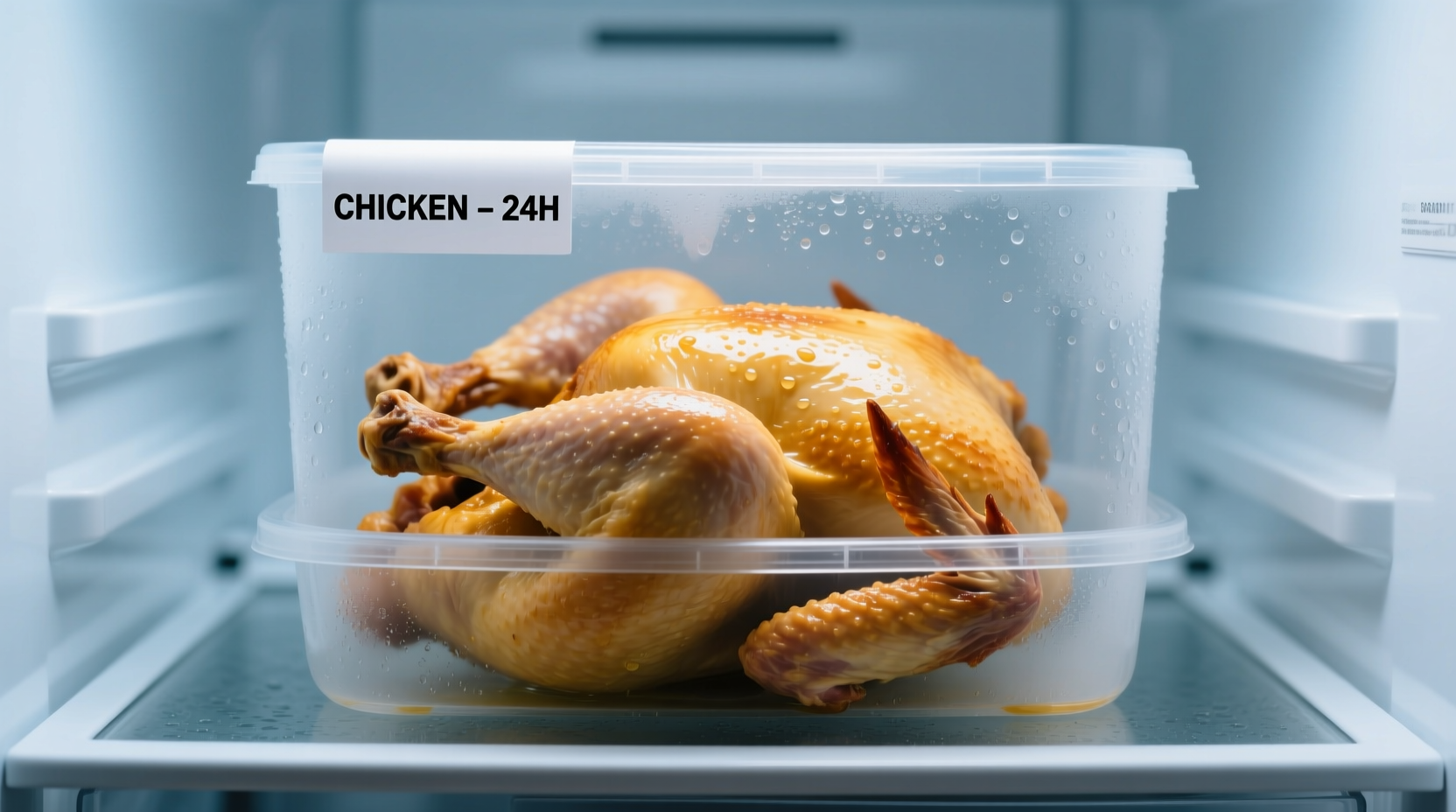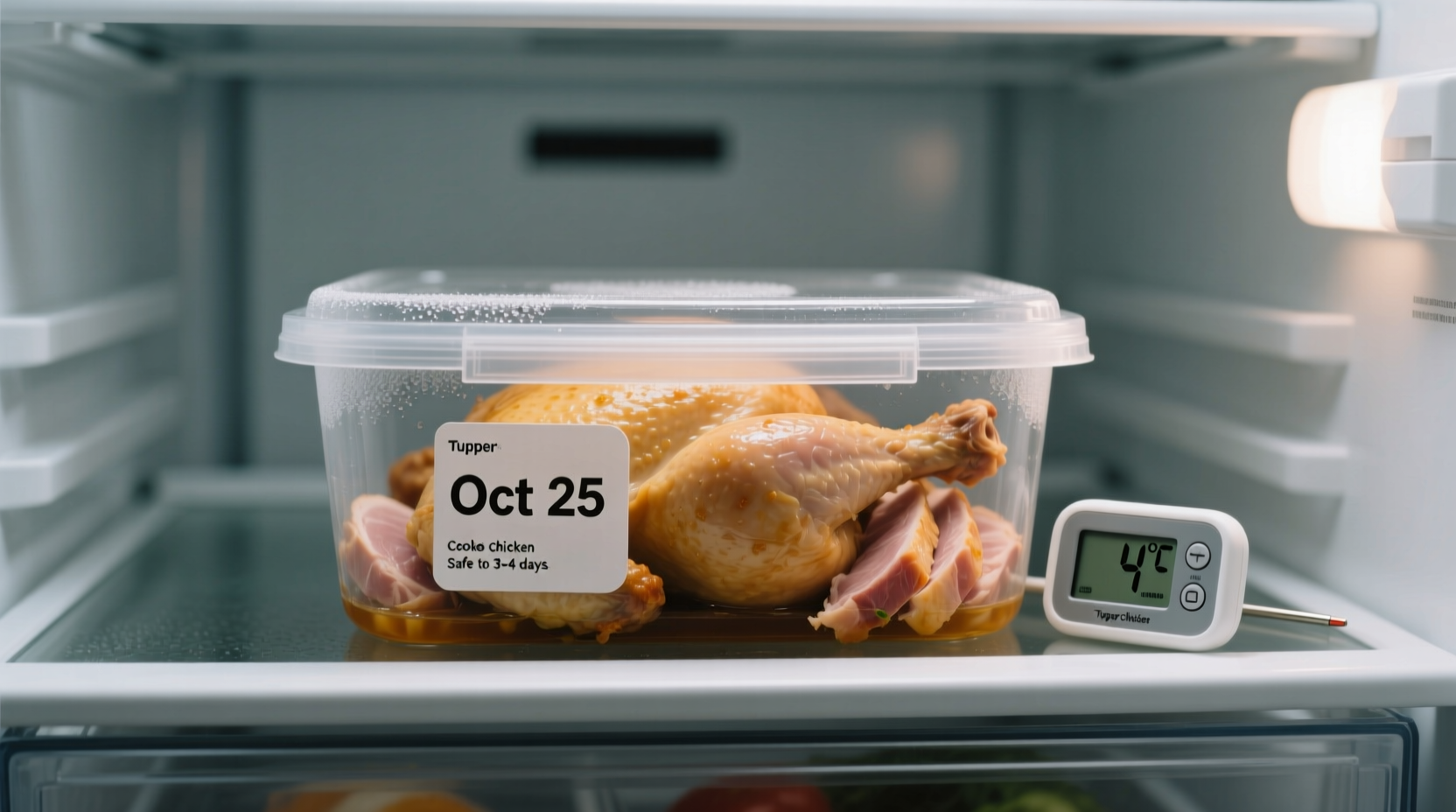Cooked chicken remains safe to eat for 3-4 days when stored properly in the refrigerator at or below 40°F (4°C). This timeframe comes directly from the USDA Food Safety and Inspection Service, the leading authority on food safety in the United States. After this period, bacterial growth increases significantly, raising the risk of foodborne illness.
Ever opened your refrigerator wondering if that roasted chicken from Sunday dinner is still safe to eat on Thursday? You're not alone. According to a USDA survey, improper handling of leftovers causes millions of foodborne illnesses annually. Getting this right matters for your health and prevents unnecessary food waste.
Why the 3-4 Day Rule Exists
When cooked chicken enters the "danger zone" between 40°F and 140°F, bacteria like Salmonella and Campylobacter can multiply rapidly. The USDA's 3-4 day guideline isn't arbitrary—it's based on extensive research into bacterial growth rates in cooked poultry. At refrigerator temperatures (35-40°F), these pathogens double approximately every 20 minutes. By day 5, even properly stored chicken often exceeds safe bacterial levels.
| Storage Method | Refrigerator (≤40°F) | Freezer (0°F) |
|---|---|---|
| Whole Roasted Chicken | 3-4 days | 4 months |
| Chicken Pieces (breasts, thighs) | 3-4 days | 4 months |
| Chicken in Gravies or Sauces | 1-2 days | 2-3 months |
| Chicken Casseroles | 3-4 days | 4 months |
Critical Factors That Shorten Shelf Life
The standard 3-4 day window assumes perfect conditions. Real-world variables often reduce this timeframe:
- Temperature fluctuations - Every time you open your refrigerator, the temperature rises. A CDC study found that home refrigerators often operate at 45°F or higher, cutting safe storage time by 30-50%
- Cooling speed - Chicken left at room temperature for more than 2 hours before refrigeration enters the danger zone
- Container type - Shallow containers cool faster than deep dishes, reducing bacterial growth time
- Initial cooking temperature - Chicken not cooked to 165°F may contain surviving pathogens that multiply faster

Your Step-by-Step Safety Checklist
Follow this sequence immediately after cooking to maximize safety:
- Cool rapidly - Divide large portions into shallow containers (no deeper than 2 inches)
- Refrigerate within 2 hours - Or within 1 hour if room temperature exceeds 90°F
- Store at proper temperature - Verify your refrigerator maintains 40°F or below with a thermometer
- Use airtight containers - Prevents cross-contamination and moisture loss
- Label with date - Use masking tape to mark preparation date on containers
Spoilage Signs You Can't Ignore
Don't rely solely on the calendar. Check for these critical indicators before consuming:
- Texture changes - Slimy film or sticky surface (even after washing)
- Odor development - Sour, ammonia-like, or sulfur smells
- Color shifts - Grayish tinge or green spots
- Mold appearance - Any visible fuzzy growth
When in doubt, throw it out. The USDA emphasizes that harmful bacteria don't always produce detectable changes in food.
Safe Reheating Protocol
Proper reheating can't salvage spoiled chicken, but it prevents illness from safe leftovers:
- Heat to internal temperature of 165°F (use a food thermometer)
- Stir liquids and casseroles for even heating
- Refrigerate leftovers within 2 hours after reheating
- Never reheat chicken more than once
When Freezing Makes Sense
If you won't eat chicken within 3-4 days, freezing extends safety significantly:
- Wrap tightly in freezer paper or vacuum-seal
- Remove air from freezer bags to prevent freezer burn
- Label with contents and date
- Thaw in refrigerator—not at room temperature
The Real Cost of Ignoring Guidelines
Consuming spoiled chicken isn't just unpleasant—it's dangerous. According to the CDC, poultry causes approximately 21% of foodborne illness outbreaks. Symptoms of Salmonella infection typically appear 6-48 hours after consumption and include:
- Severe abdominal cramps
- Diarrhea (often bloody)
- Vomiting and fever
- Dehydration requiring medical attention
Vulnerable populations—children under 5, adults over 65, pregnant women, and immunocompromised individuals—face significantly higher risks of complications.











 浙公网安备
33010002000092号
浙公网安备
33010002000092号 浙B2-20120091-4
浙B2-20120091-4